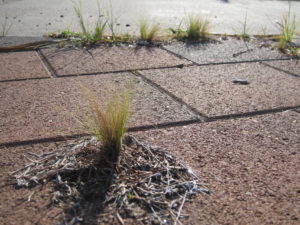Controlling Invasive Plants
Invasive plants are introduced species that out-compete native plants and animals for space and resources, and are often difficult to remove or control. Once established, invasive plants can overwhelm the habitats of local plants, increase fire and flood dangers, and rob other plants and wildlife of precious water. Tackling the problem of invasive plants requires educating ourselves — in recognizing invasive plants and taking steps to control them if they are already present. Whether someone planted them before, or they arrived by wind, water, or animals, it is important to take action as soon as possible – before they can do damage to infrastructure or wildlife.
What to do if there are already invasive plants on your property
To control invasive plants, you first need to know which species you are trying to manage. To determine the type of plant consult PlantRight’s list of invasive ornamental plants which lists invasive plants by region with photos. If it’s not there, try looking in the more comprehensive California Invasive Plant Council (Cal-IPC) Invasive Plant Inventory.
Some plants can spread only by seed, while some can grow a new plant from just one piece of the plant that falls on the ground, and some can do both. Birds or other animals must spread the seeds of some plants, while other plants produce thousands of seeds that will blow in the wind. Once you know the type of invasive species consult Invasive Plants of California’s Wildlands to learn how it reproduces and how to get rid of it.
Invasive plants can be any type of plant (e.g. vine, shrub, grass, tree) and each can require different methods to manage them based on their growth type. Here are some examples of different plant types and what to consider when managing them:
Ornamental grasses
Invasive grasses like Green fountain grass (Pennisetum setaceum), Pampas grass (Cortaderia selloana) , and Mexican feathergrass (Stipa/Nassella tenuissima) should ideally be removed before they flower and produce copious amounts of seeds. If you remove these grasses when they are in flower, cut off the flower stalks and carefully placed in plastic bags to prevent spreading seeds. These seed head should be placed in a garbage bin and not a home compost bin. The rest of the plant should be completely dug up and could be composted.
Vines and groundcovers
Many of these types of plants can often resprout from a piece of the plant, so be careful when removing them to not leave pieces on the ground. Highway iceplant (Carpobrotus edulis) is easy to remove by hand pulling, but it can grow roots and shoots from any node, so all live shoots should be removed from contact with the soil. Otherwise you’ll just be helping the iceplant spread. Likewise, Periwinkle (Vinca major) can be removed by careful hand pulling and all root nodes must be removed. Start from the edge of the patch and pull the periwinkle back in on itself to prevent spreading pieces of it.
Shrubs and trees
Shrubs like Scotch broom (Cystisus scoparius) produce many seeds that will disperse by exploding from the plant and can survive for years in the soil, so if possible, remove them before they get a chance to flower. Weed wrenches help with pulling them out of the ground. Some trees like Russian olive (Elaeagnus angustifolia) will respond to being cut down or girdled by resprouting, so do some research before removing a tree and seek the help of a landscape professional to remove larger trees.
If you already have an invasive plant on your property, take the following steps. See below for how to handle a few types of invasive plants.
- Identify Invasives in Your Yard: Make sure that you have accurately identified the plant and understand how the plant reproduces and spreads.
- Research Ways to Manage: Consult the plant profiles on the California Invasive Plant Council’s (Cal-IPC) website page on invasive plant management to determine the best means of eradicating the plant. This may include repeatedly cutting the plant to the ground, digging out the plant’s entire root system, spraying with an herbicide, or other methods.
- Dispose of Invasives Properly: Bag seeds, flowering parts, and any plants that can spread by runners and dispose of them in the trash. Do not add invasive plants to your home compost pile or municipal green collection bins; the seeds or roots may still be able to propagate in the compost pile. Only parts of the plants that cannot grow into another plant can be composted. These disposal guidelines from Connecticut and Florida also have useful information about disposing of invasive plants.
- Maintain the Watch: For the next several seasons keep watching the area where you removed the invasive plant to make sure the plant doesn’t return. If it regrows, keep repeating the eradication steps until the plant no longer returns.



